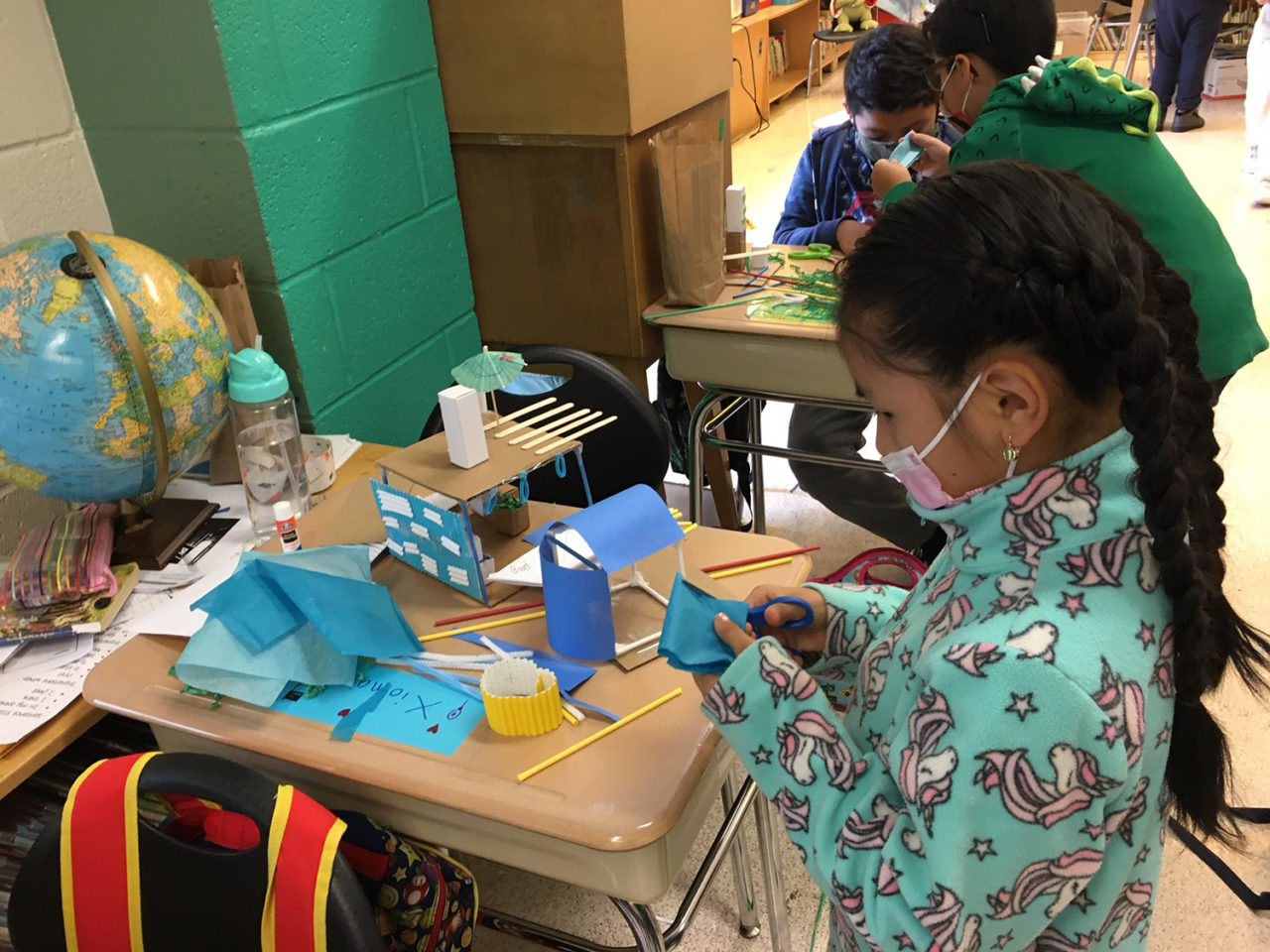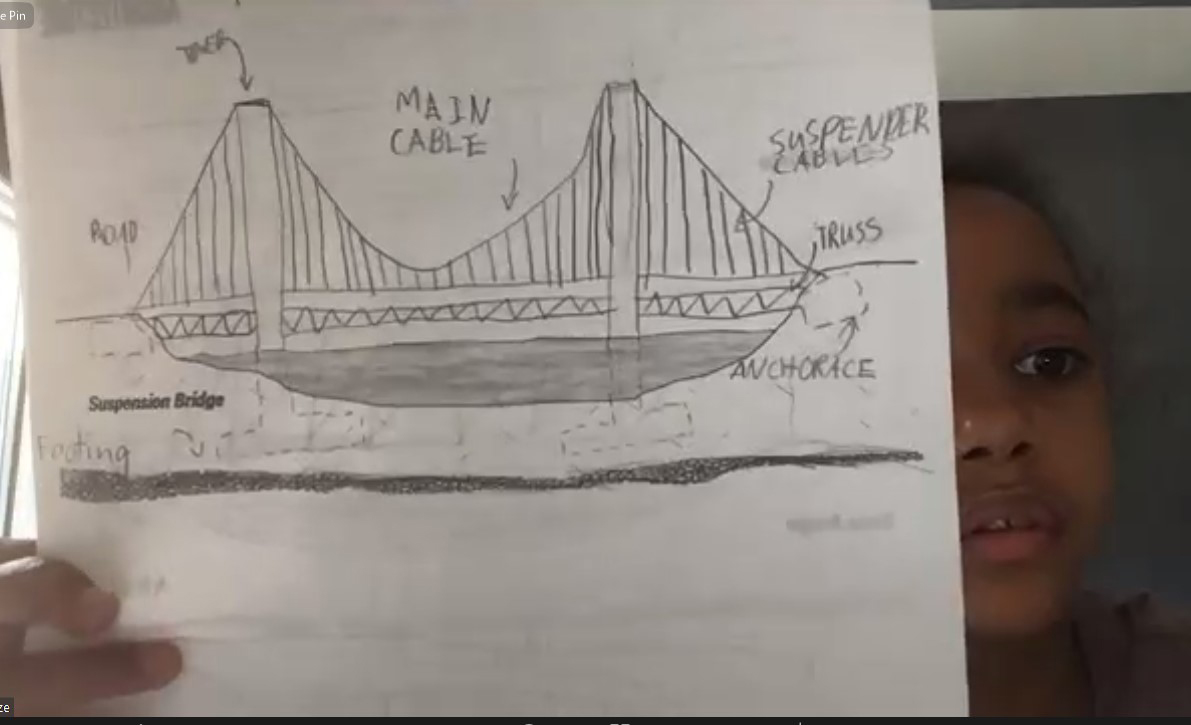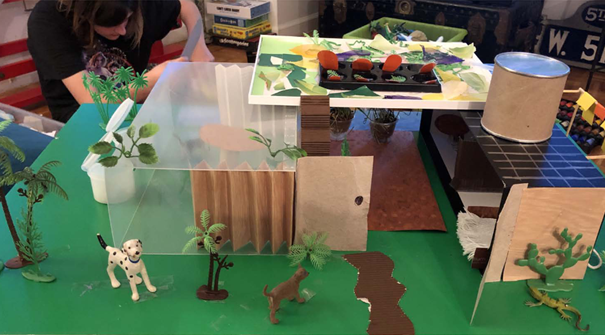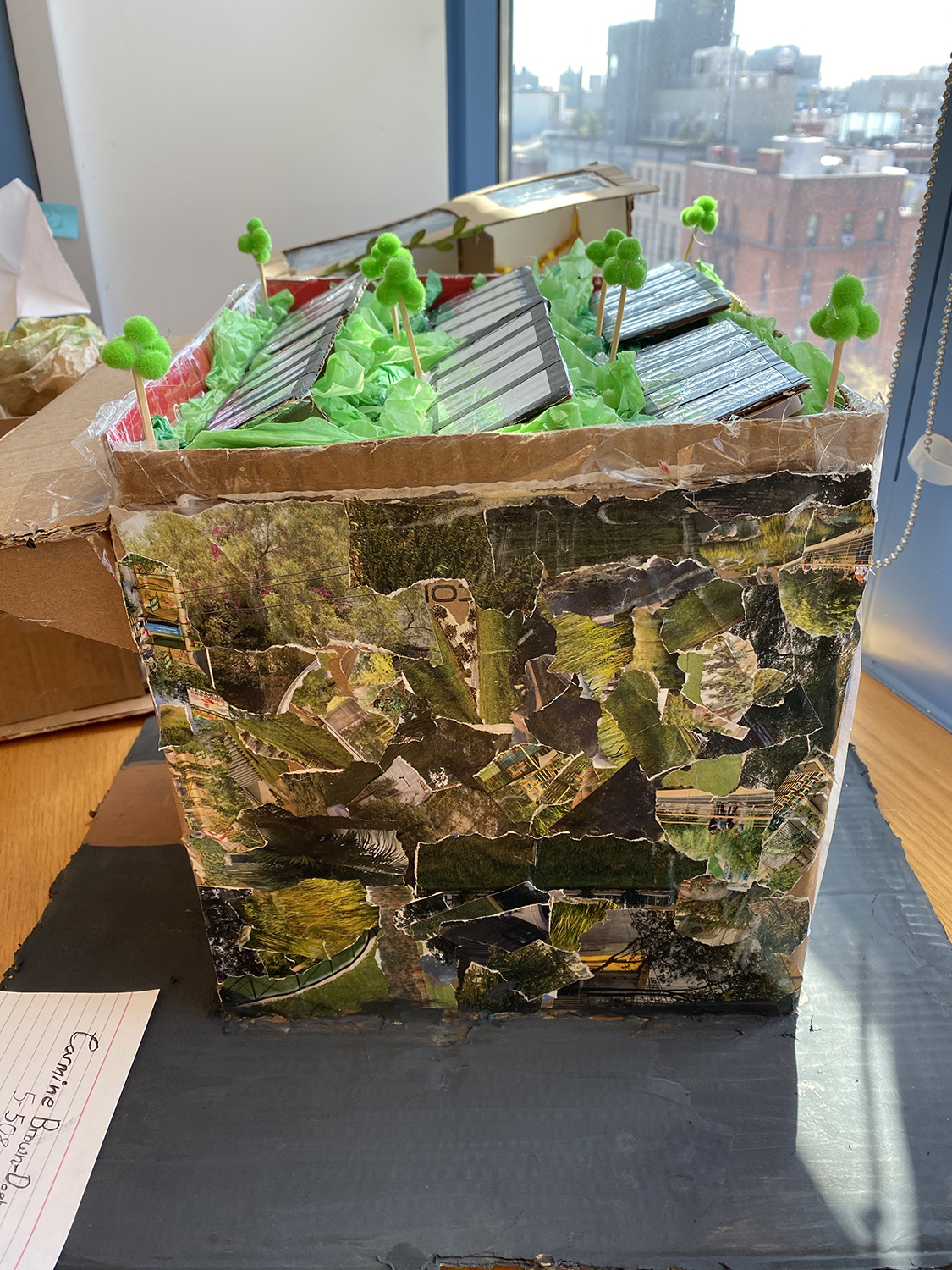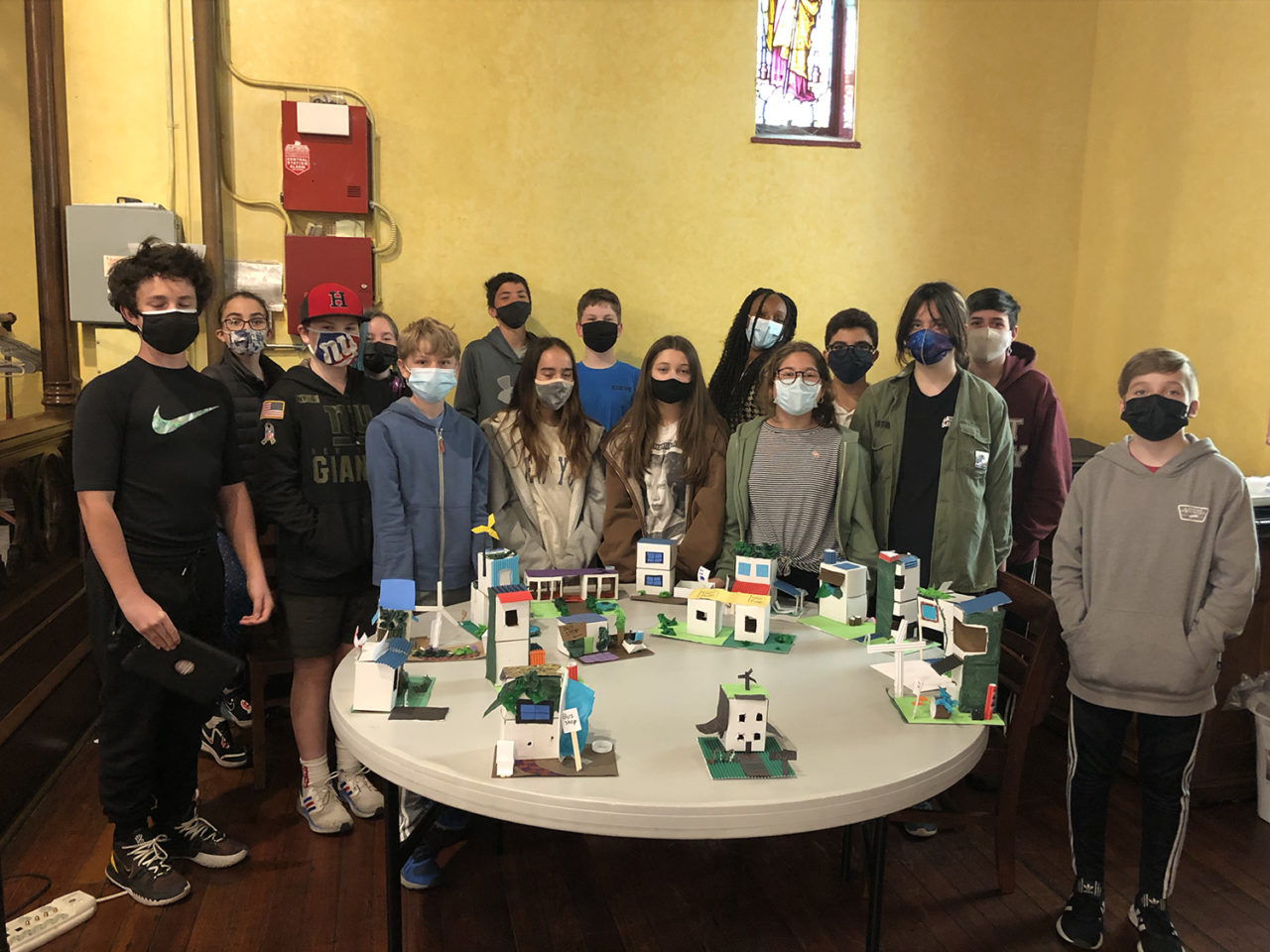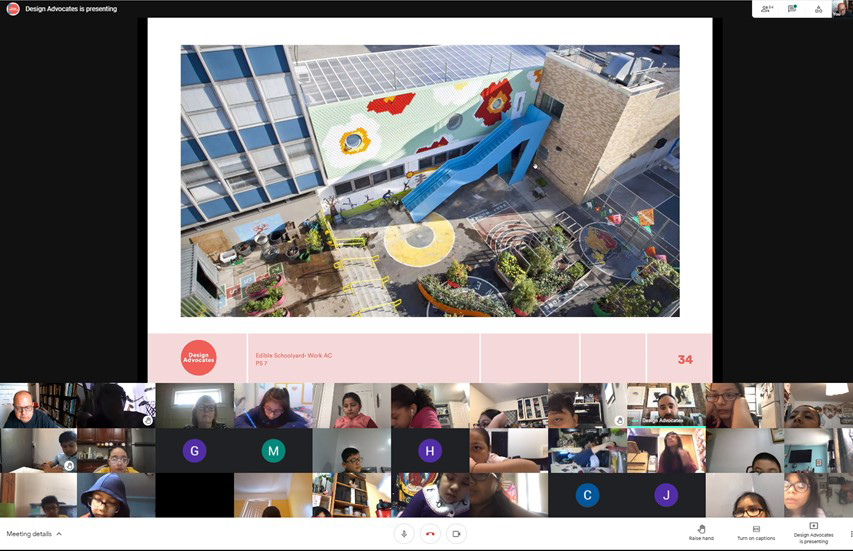by Tim Hayduk and Catherine Teegarden
Reflecting on the 2020-21 school year that just wrapped up, we are grateful for all that we were able to accomplish despite the difficulties and constraints brought on by the COVID-19 pandemic. With a delayed start to the school year, followed by frequent school closures and shifting opt-in periods for in-person learning, it took schools a few months for schools to get their footing and be ready for outside programming. As a result, the Center for Architecture instead focused on expanding our virtual after-school and weekend programs during the Fall semester, offering 11 classes for students in grades 3-12 instead of our usual two to three in-person programs, as our audience expanded greatly to include students throughout the city and across the country who never would have been able to attend a similar program if it were held at the Center. These programs included a six-session Saturday program for high school students to design a public information kiosk for a social advocacy group of their choosing, and eight-session after-school programs on topics ranging from digital design to American architectural history to a freehand drawing class that traveled to sketching sites around the world on Google Earth.
During this time, we also worked to reestablish partnerships with several long-term school partners and develop programs with new schools looking to enrich their students’ school experiences, as many schools’ art teachers had been redeployed to cover the additional class groupings required by COVID-19 social-distancing guidelines, leaving students with little or no arts opportunities. We also revised curricula for virtual implementation and created student material kits that were delivered to schools to ensure that hands-on design projects remained at the core of our programming. All of our Student Day and Learning By Design:NY (LBD:NY) school programs were taught as live, interactive online workshops led by Center for Architecture education staff or freelance design educators. Donations from our supporters and grants from institutional funders ( including National Endowment for the Arts, NY State Council on the Arts, NYC Department of Cultural Affairs, Cornelia T. Bailey Foundation, and Con Edison) enabled us to bring these programs to low-income Title One schools for free or at significant discounts. Also key to our success was the flexibility and dedication of our partner teachers, who adapted to these new circumstances and ensured that students had the support they needed, despite being on the other end of a screen.
As Vacation and After-School programs continued over the winter and spring of 2021, our school programming also picked up. Fifty classes participated in our Student Day programs, retooled as two-part workshops that introduced students to a focus topic in Part I and guided them to create their own designs on the theme in a follow-up 90-minute session. Many of these classes chose our Green Architecture program, supported in part by Con Edison, which introduced students in grades 3 and up to key principles of sustainable design and challenged them to create their own green buildings following a checklist based on the LEED rating system. Rather than provide materials kits for this program, students were required to use recycled materials from home to create their sustainable building models, driving home the point of materials conservation and reuse. Other virtual programs included the Language of Architecture, which introduced students to fundamentals of building design through drawing and observation activities, including a customized architectural scavenger hunt in their own school neighborhoods using Google Maps. Skyscrapers and Building Bridges were also popular topics.
Forty-nine classes participated in five- to eight-week Learning By Design:NY programs, including many Bridge Design programs with second graders at PS 140Q, PS 42M, PS 77M, PS 87M, and PS 276M and Neighborhood Architecture programs with first grade classes at PS 77M and 276M.
At the Peck Slip School in lower Manhattan, fourth grade students typically look forward to building a 12-foot-long model of a street in New Amsterdam as part of their colonial New York studies. In past years, groups of students would create models of buildings of various sizes and materials—wood, brick and stone—to recreate Stone Street as it may have looked in the 17th Century. This year, with remote students on their own at home and in-person students at the other end of a computer screen, we revised the project to allow each student to build their own model of a New Amsterdam dwelling using a kit of parts that we developed and delivered. Students were still able to learn about the ways in which the Dutch acquired and used building materials and constructed their buildings based on tradition and know-how. Third graders at the school learned about the area’s original Lenape inhabitants and built replicas of their traditional wigwam dwellings. What seemed like a daunting retooling of a tried-and-true annual project became a lesson in understanding how resilient students can be to new ways of learning and recognizing their dedication to bringing a complicated project to fruition all by themselves.
Another new LBD:NY project was developed in partnership with architects from the pro-bono design group Design Advocates, who approached the education team with an offer to establish a community-based design/build project with a partner school. PS 92Q, the Harry T. Stewart, Sr. Magnet School for Engineering, Architecture & the Arts in Corona, Queens was open to the opportunity to engage their third-grade students in the design process. This residency was conducted virtually as a five-session immersion into design thinking, which pondered notions of gathering, providing shade and encouraging activity as ways to improve the school’s play yard. Design Advocates members and architects Michael Yarinsky and Jane Lea presented projects of a public nature to the students and entertained questions about the life of an architect. Students developed drawings and models of their proposals for playground seating, shade structures, and play spaces. In the coming academic year, we will work with the students as fourth graders to continue the design process, with the goal of building some of the students’ ideas with the help of Design Advocates and the PS 92Q community. Funding from local City Councilperson Francisco Moya helped support this year’s program.
Despite the hardships of isolation, the challenges of remote learning and the inability to offer hands-on teaching in person, we were remarkably impressed with what students were able to accomplish on their own this year. Many schools were not able to offer arts education and our project-based learning gave students an opportunity to work with their hands and creatively problem solve. Several teachers reported that visual and tactile learners really shined because the drawing and model making gave them a voice that was often lost through remote learning. As one third-grade teacher from PS 92Q commented, “My students learned so much! They were creative, they used their imagination and learned to think outside the box to find new uses for things and solve problems. My students were exposed to the creative process of a field, architecture, that is present in everyday life, but it is not well known.”
We look forward to continuing to open young people’s eyes to the built environment around them, empowering them to discover their own design interests and abilities. For those who can’t wait for next school year, Summer Programs for grades 3-12 are running online and in-person at the Center for Architecture this summer, with some spaces still available in our elementary school programs. Come join us!
